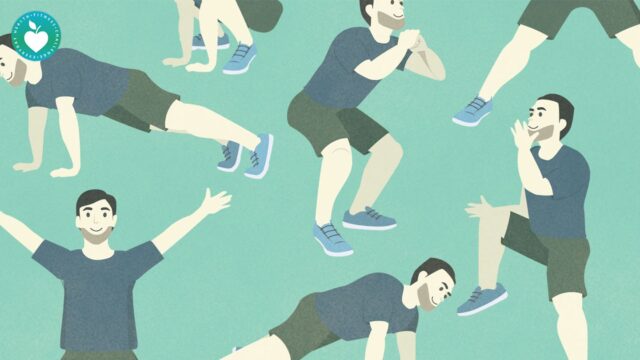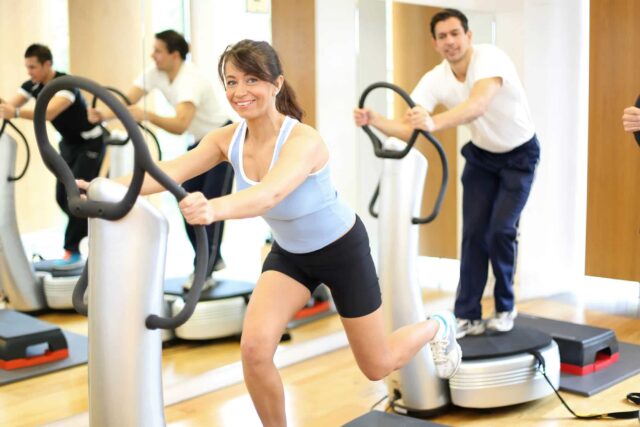
Both group fitness sessions and personal training options are readily available. How can someone determine whether their actions are beneficial given all the possibilities? There is some truth to the adage “no pain, no gain,” to which many people adhere. Others believe that they must work out hard if they are sweating.
Nowadays, every athlete has advice on the best ways to train. As a result of the athlete’s training and racing experiences, their thoughts and beliefs frequently have some validity. However, when it comes to training concepts, it is undeniably true that we “don’t know what we don’t know.”
These ideas are essential for achieving ongoing training improvement. Without using them, progress will be slight, and plateaus will be unavoidable. Exercise difficulty can be gradually increased with the aid of overload and progression, while specificity ensures that each person receives training tailored to their unique needs.

Top Core Values To Follow
1. Specificity
According to the specificity principle, each person’s goals and the type of training they receive should be considered. This means that each person should choose their training based on the sport they play, their goals, and the specific skills they wish to develop.
This indicates that a runner should explicitly train for endurance when running if they want to run farther. Swimming, for instance, can be a fantastic cardiovascular workout and help with overall fitness, but a runner should train by going steadily farther and longer distances. Additionally, they should focus on running longer distances rather than shorter sprints to get faster timings in preparing for endurance.
2. Overload
According to the Overload principle, it’s important to subject the body to more stress than is typical to advance and improve. According to the theory, the body will adjust to cope with the steady increase in pressure. But it’s crucial to avoid going overboard. Too much-added stress can be harmful. Going straight for heavyweights, for instance, is not a smart option for those new to fitness because the body is used to little to no exertion. Therefore, even the introduction of light exercise causes the body to experience stress above average, and as it becomes accustomed to regular activity, the FITT model introduces additional overload.

The model FITT comprises of:
Frequency: Increasing or decreasing the frequency of workouts each week and increasing your exercise frequency from two to three times each week, for instance.
Intensity: Increasing the weight or the number of repetitions to make the workout more demanding. This can be a lengthening of the workout, such as moving from two miles of running to three.
Time: Exercising for more extended periods. This relates to intensity, where more sets or exercises can be added to make the workout harder. This equates to more excellent time spent exercising as a result.
Type: Alternating forms of workout to increase difficulty. This could involve doing one-legged squats instead of regular ones or going from walking to running.
3. Progression
Changing your workouts prevents your body from becoming too accustomed to one routine, contrary to the progression principle, which argues that bodies adapt to the existing exercise regimen over time. Utilizing the overload principle to keep the body from becoming too accustomed to one training regimen is crucial to advancement. Since overload necessitates more stress throughout training, this typically implies increasing the amount of exercise performed.
Instead of always using the same overload, it may be a good idea to experiment with them over time. Therefore, increasing the repetitions rather than just the weight can result in an excess. An alternative is to enhance the frequency of exercise, for example, to three times per week instead of two.

4. Person-Specific Response To Training Stimulus
The most significant blunders committed by athletes and coaches most likely occur here. It is tempting to encourage other athletes to follow the same training regimen when one athlete responds well to it, but one size does not fit all. All the above principles must be considered, but how we put them into practice is more of an art than a science. A skilled coach will be able to see the inherent variations and distinctions in every single athlete and try to ascertain the best plan of action to get them ready for peak performance.
The essential truth that each person differs from others is an important principle! Every person reacts differently to training. Don’t worry if one of you grows fitter more quickly than the other if you are walking or cycling with a friend and doing the same amount of exercise; this is what individualization is all about.
It may be that one of you is experiencing stress at work or challenges at home, but it’s incredible what can impact your training. Even if the workout was the same duration the next day, there are certain days when training might go exceptionally well and the next day be a nightmare. Individualization occurs here.
5. Reversibility
If what you’ve achieved is not maintained, you risk losing it. The gains you have gained will be undone if you quit exercising. It is crucial to building the body back up gradually until you reach that level again. If you stop exercising for a while or cut back on your training, you might not be able to return to activity at the same level as before.
However, it would help if you use caution while overtraining. Lack of enough rest during your training plan might lead to overdoing workouts to the point where it negatively impacts your progress and outcomes. Overload, which is the deliberate exposure to a more significant workload with the necessary amount of rest in between, must not be confused with this. You will experience overtraining if you don’t get enough rest, and your body won’t be able to carry out the motions you require safely and correctly.

6. Variance
Try to diversify your training to keep you interested and present your body (and the muscles you’re exercising) with a new challenge. This can be achieved by varying the exercises in your regular workout circuits or by engaging in a whole other activity. Many athletes may participate in a different sport to maintain fitness while getting a break from their primary season.
According to experts, training programs should keep entire periods of idleness to no longer than two to three weeks. Long stretches of inactivity should be avoided, and your training regimen should include some “maintenance” training where an extended break is required.
7. Adaptation
The term “adaptation” describes the body’s capacity to change in response to a rise or fall in physical demands. We can learn to synchronize our muscular movements and hone our athletic abilities in this way. A skill or action becomes automatic and simpler to perform after being practised frequently. When you begin a new training regimen, you often feel sore, but after following the same plan for a few weeks, you experience little to no muscle soreness. This is due to adaptation. Because the human body is designed for survival, it will adjust and become more straightforward.
Consider your present training. Do you consider those mentioned above? If not, it’s essential to consider each principle and incorporate the necessary components into your routine to sustain and advance as much as possible.

Do You Need Training Software To Help Your Clients Accomplish those Core Values?
People choose personal training software mainly because of the advantages of time savings, payment planning, program creation, and client scheduling. But there are also a lot of unanticipated advantages that most individuals don’t anticipate. Here are some of the benefits:
Easy Use Will Boost Client Retention
Personal trainers frequently emphasize selling and acquiring new clients more than maintaining existing ones. This is a mistake because keeping clients is one of the most crucial aspects of being a successful personal trainer. This is true for the following two reasons:
You won’t need to constantly promote your services if you’re keeping clients because your schedule will be complete.
A bad reputation as a personal trainer who loses clients quickly is something you don’t want. This suggests that your work is subpar and that your clients are dissatisfied with the outcomes.

It Is Simpler To Upsell Extra Services When There Are Flow-On Benefits
When your clients already use your training software, upselling extra services like diet planning or targeted training is simpler.
To help your clients keep track of their diet and calories, the PTminder system, for instance, provides an online nutrition planner with hundreds of elements. Once convinced of that, they can use the software to access all of their needs.
Additionally, because they are following a diet that you can keep an eye on, your clients will be able to see better outcomes.
Better Communication Will Keep You Interested Over Time
This was mentioned in the first point, but it merits further discussion. I never considered talking with my clients to be one of the advantages when I first converted to personal training application.
With training software, you can access your client’s information, monitor their development, and stay in touch. Additionally, since it’s simpler, your clients are more inclined to continue doing business with you.
Following those principles can help your body gain the shape you want. Using software programs from your trainer is more advantageous because you would get additional tips from your peers.









